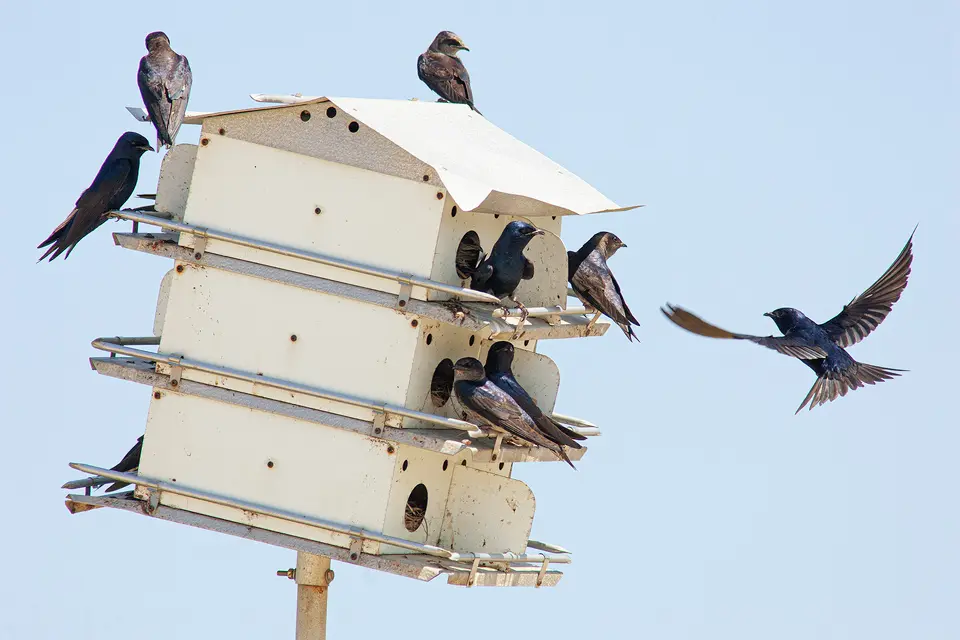Purple martins move into Houston's nesting boxes for the winter
By Gary Clark,CorrespondentJan 24, 2024
Purple martins, the largest swallow breeding in North America, are returning to their nest boxes.


Kathy Adams Clark/KAC Productions
Purple martins are moving in. They are arriving to occupy multiunit nest boxes that Houston-area residents have installed to welcome them.
Before Europeans arrived in North America, Native Americans installed hollowed-out gourds to attract nesting martins to their villages. Martins returned the favor by devouring flying insects that infested stored grain and chased off crows and vultures trying to pilfer drying meat hung around villages.
As Europeans built towns and farms, they adopted the Indigenous tradition of offering nesting homes for purple martins. They built nest boxes with multiple compartments, like an apartment house for the martins.
People still use similar nest boxes today, but the trend is to use hanging plastic gourds resembling the hollowed-out gourds in ancient Indian villages.
Purple martins have become so accustomed to the artificial nesting accommodations that they've virtually abandoned their ancient practice of nesting in tree cavities. Some martins breeding in western states still nest in the cavities of trees and saguaro cactuses. Others have switched to artificial nest boxes.
People started attracting martins to nest boxes, thinking the birds would eat mosquitoes. But the birds don’t eat mosquitoes. Instead, they dine primarily on insects such as beetles, crickets, butterflies and especially dragonflies and damselflies.
Purple martins
- Purple martins are the largest North American swallows at about 8 inches long with about a 15-inch wingspan.
- Adult males are entirely iridescent purplish-blue, females are gray underneath and first-year males have purple splotches beneath.
- Martin houses with installation instructions are available at Wild Birds Unlimited stores, Just for the Birds in Old Town Spring and other nature supply stores.
- Prevent raccoons and other mammalian predators from plundering martin nests by installing a climbing barrier on the pole holding a martin house or gourds.
- Check for invading nests from house sparrows or European starlings and clear them out.
- More information is available at purplemartin.org.
See Less
No matter, because the sleek blue-black birds still bring us joy as they set up housekeeping in our artificial nesting abodes.
Purple martins are the largest swallows breeding in North America, others being smaller cave, cliff and barn swallows. The latter two swallows arrive in the Houston area during spring and summer and plaster mud nests under freeway overpasses, bridges and eves of buildings. Martins nest in the more civilized multiunit abodes we offer.
Older adult male martins show up in late January to survey the previous year's nesting box or perhaps look for new boxes. Young males and adult females show up between February and early March.
Martins migrate from winter homes in Brazil and parts of South America east of the Andes. They move quickly up through Central America to Mexico's Yucatán Peninsula and then fly across the Gulf of Mexico to Texas and other Gulf Coast states. Birds going to the western U.S. fly across Mexico.
Purple martin populations have declined by nearly 24% since 1978, but the reasons for the decline remain speculative.
houstonchronicle.com
When I was growing up these apartment type boxes were common in town and out. Not surprised they've declined. People don't have as many big boxes for them anymore.
They would travel at least a mile out of town to drink from ponds they skimmed over. |






